Now is the time to be thinking about spring planting
By Logan Baum and Jonathan Dew, Quail Forever Missouri Farm Bill Biologists
Due to the recent cold weather, many people are discussing how the weather is affecting the numerous wildlife species in our area of Missouri. The winter is hard on every species, especially our upland birds such as bobwhite quail. The biggest problem they face is the availability of food and high-quality cover.
Over time, the largest contributor to the decline in quail populations has been the loss of native habitat. This has been due to urbanization, modern agricultural practices, and the transformation of grasslands into mature forests and non-native grass plantings. The solution to the decline of our nation’s bobwhite quail populations is the restoration of native habitat.
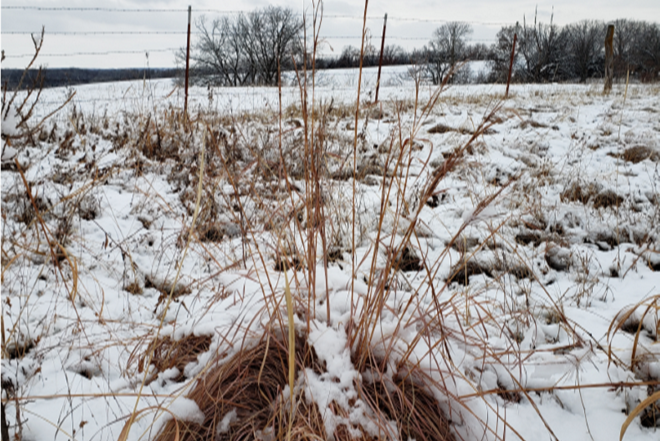 Snow on little bluestem with thermal cover next to base of grass. Photo by Josh Marshall.
Snow on little bluestem with thermal cover next to base of grass. Photo by Josh Marshall.
Our native grasslands should consist of a mosaic of native warm season grasses, forbs, and shrubs. Each plays a vital role in the survival of quail throughout the harsh winter months. During the dormant season, there are many projects that can help restore the native grasslands of the past. Through manipulating your habitat, you can give upland birds the best chance of survival.
Native Warm Season Grasses
Warm season grasses dominated our prairies long before today. Species such as Indiangrass, big bluestem, little bluestem, and switchgrass are essential to quail in colder months. Native bunch grasses create dense cover from above to hide from predators while also providing areas for birds to nestle in, blocking out the elements such as wind and snow.
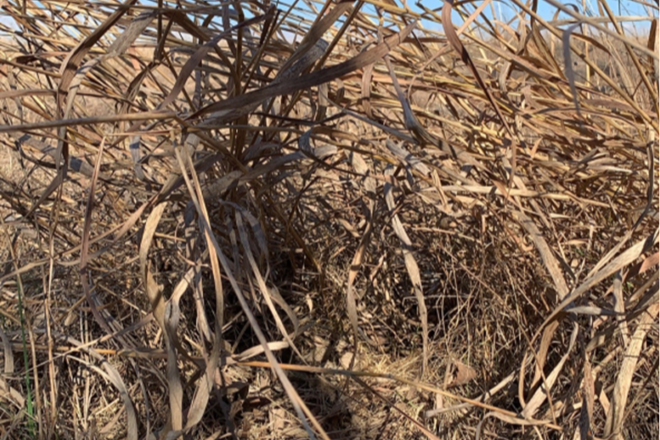 Indian grass with cover shown between base of grasses.
Indian grass with cover shown between base of grasses.
One of the most important benefits of native bunch grasses is in the name. The term “bunch” refers to how the grasses grow in clumps, allowing bare ground between the plants. Even when snow and wind lay the top parts of the grasses down, the bare ground underneath allows quail to travel in search of food.
Native Shrubs
Native shrubs are essential for the survival of quail. These shrubs can provide a valuable source of food and most importantly, thermal cover during the winter months. Species such as wild plum, dogwood, sumac, and many others provide areas to escape the elements.
Winter winds can have a major impact on a quail’s ability to regulate their body temperature. Thermoregulation requires a lot of energy to maintain. By planting dense shrub cover, windchill becomes less of a factor which allows quail to save energy.
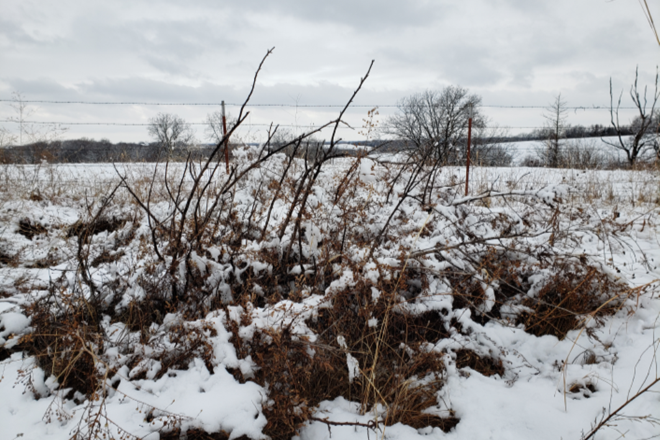 Snow on top of downed tree structure surrounded by forbs and native grasses showing thermal cover provided by downed tree. Photo by Josh Marshall.
Snow on top of downed tree structure surrounded by forbs and native grasses showing thermal cover provided by downed tree. Photo by Josh Marshall.
Downed tree structures and edge feathering can also provide an essential source of thermal and escape cover. Downed trees are dragged into a native grass field to provide woody cover. Edge feathering is very similar to downed tree structures with one small difference. These are placed along the edges of fields to provide a transition zone between mature forest and grasslands. When planning your edge feathering and downed tree structures, do not push trees into dense brush piles. These structures are intended to be “open” to allow space for the movement of quail and other upland wildlife within the structure.
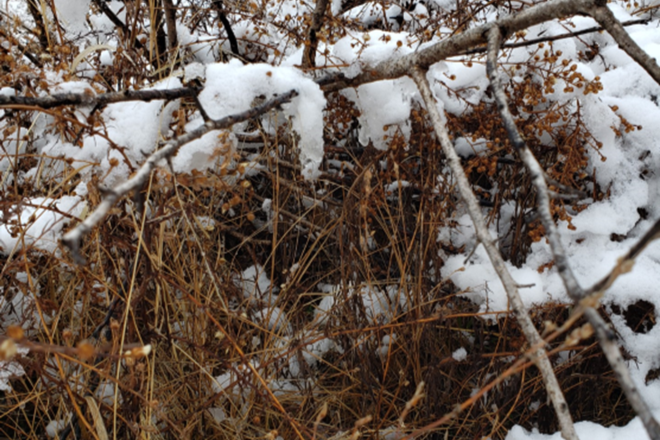 Downed tree structure after a snowfall. This photo illustrates how downed trees create thermal cover from the elements. Photo by Josh Marshall.
Downed tree structure after a snowfall. This photo illustrates how downed trees create thermal cover from the elements. Photo by Josh Marshall.
Site Prep and Planting
Quail don’t like traveling long distances from cover to search for food. The longer they are outside woody cover, the more they are exposed to the elements and predators. Downed tree structures and edge feathering can be placed strategically throughout a property to provide quail with more access to much needed resources.
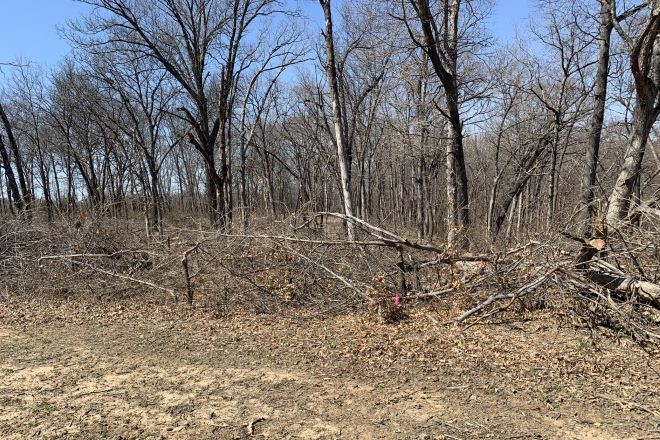 Edge feathering for escape and thermal cover.
Edge feathering for escape and thermal cover.
With temperatures warming in the coming months, now is the time to finish site preparation for your native grass, forb, and shrub plantings. Depending on the current conditions of the property, herbicide applications may be needed to eliminate any non-native cool season grasses such as tall fescue and smooth brome. Prescribed burns should be used to remove any thatch before planting. Be sure to follow a burn plan and check your weather on burn day.
The key to having a successful planting is getting good seed to soil contact.
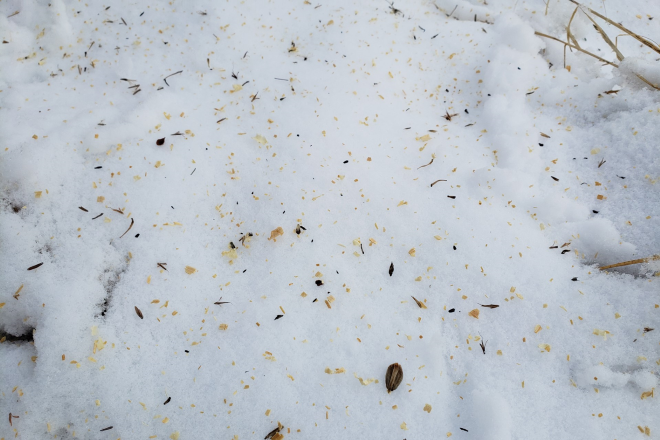 Native seed broadcast on top of fresh snow. Photo by Josh Marshall.
Native seed broadcast on top of fresh snow. Photo by Josh Marshall.
Native seed can either be broadcast or drilled during the dormant season. When planting, make sure the seed bed is clean and firm so that you can provide the seed with good seed to soil contact. When drilling, be cautious of planting depths. Native seeds placed too deep into the soil will not germinate.
If you are interested in adding good quality habitat to your property, contact your local Farm Bill Biologist to get started!